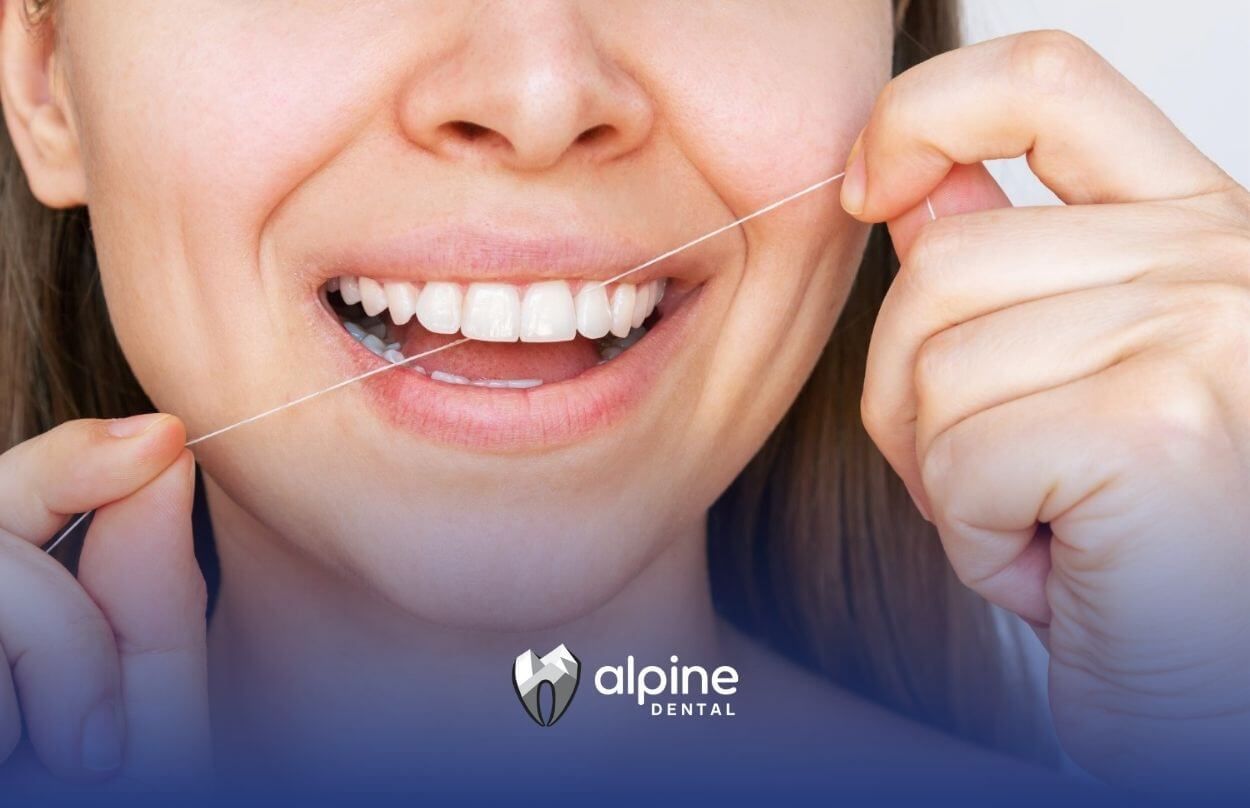Gum Line Cavity: Everything You Need to Know
Maintaining a healthy smile is about more than just brushing and flossing—sometimes, problems can develop in the most overlooked places. One of the most common and often misunderstood dental issues is the gum line cavity. At Alpine Dental in New Jersey, we believe in empowering our patients with knowledge so they can take control of their oral health. In this comprehensive guide, we’ll break down everything you need to know about gum line cavities: what they are, why they happen, how to spot them, and—most importantly—how to prevent and treat them.
What is a Gum Line Cavity?
A gum line cavity is a type of tooth decay that develops at the junction where the tooth meets the gum. Unlike cavities that form on the chewing surfaces or between teeth, gum line cavities occur in a tricky spot that’s often harder to clean and more vulnerable to plaque buildup. This area is especially susceptible as gums recede with age, exposing the softer root surface (cementum), which is less resistant to decay than the hard enamel covering the rest of the tooth.
Causes of Gum Line Cavity
Understanding what causes a gum line cavity is key to prevention. Here are the primary culprits:
- Dental Plaque: The biggest cause is plaque—a sticky film of bacteria that forms when bacteria in your mouth feed on sugars and starches from food and drinks.
- Tartar Buildup: If plaque isn’t removed, it hardens into tartar (calculus), which is even harder to clean and allows bacteria to thrive near the gum line.
- Gum Recession: As gums recede (often due to age, aggressive brushing, or gum disease), the softer root surface becomes exposed and more prone to decay.
- Poor Oral Hygiene: Inadequate brushing and flossing leave plaque and food debris at the gum line, increasing risk.
- Diet: Diets high in sugar and acidic foods promote plaque formation and enamel erosion.
- Dry Mouth: Reduced saliva flow from medications or medical conditions can make it harder for your mouth to wash away food and bacteria.
- Smoking and Tobacco Use: Both contribute to gum disease and increase the risk of cavities at the gum line.
Symptoms of Gum Line Cavity
Gum line cavities can be sneaky. Early on, you might not notice any symptoms. As the cavity progresses, you may experience:
- Tooth Sensitivity: Especially to hot, cold, or sweet foods and drinks.
- Toothache: Persistent or intermittent pain near the gum line.
- Visible Stains or Spots: Early cavities may appear as white spots, eventually turning brown or black as decay worsens.
- Holes or Pits: You might notice a small hole or pit at the gum line.
- Swollen or Red Gums: The gum tissue around the affected tooth may become inflamed.
- Bad Breath or Bad Taste: Persistent bad breath or a foul taste can result from bacterial buildup and decay.
- Sensitivity to Sweets: Aching or discomfort after eating sugary foods.
Why Gum Line Cavities Are a Big Deal
Gum line cavities are more than just a nuisance—they can lead to serious dental problems if ignored:
- Progression to the Root: If decay reaches the root, it can cause infection, abscess, or even tooth loss.
- Gum Disease: Cavities at the gum line can contribute to or worsen gum disease, increasing the risk of tooth mobility and loss.
- Complicated Treatment: Cavities below the gum line are harder to treat and may require more extensive procedures, such as root canals or gum surgery.
How Gum Line Cavities Are Diagnosed
Dentists at Alpine Dental use a combination of methods to diagnose gum line cavities:
- Visual Examination: Dentists look for discoloration, pits, or holes near the gum line.
- Dental Instruments: Special tools help check for soft spots or roughness that indicate decay.
- X-rays: These reveal the extent of decay, especially if it’s below the gum line or between teeth.
Treatment Options for Gum Line Cavity
The best treatment depends on the location and severity of the cavity:
1. Fillings
- Composite Fillings: The most common treatment for small to medium gum line cavities is a composite resin filling, which matches your natural tooth color.
- Procedure: The dentist numbs the area, removes decayed tissue, and fills the cavity with resin or another suitable material.
2. Root Canal Therapy
- When Needed: If decay has reached the tooth’s pulp or root, a root canal may be necessary.
- Procedure: The dentist removes infected tissue, cleans and disinfects the root canal, and seals it. A crown may be placed for added protection.
3. Gum Surgery
- For Deep Cavities: If the cavity extends below the gum line and is hard to reach, minor gum surgery may be needed to access and treat the decay.
- Procedure: The gum is gently lifted to allow access to the cavity, which is then cleaned and filled.
4. Crowns
- When Needed: Severely damaged teeth may require a crown to restore strength and function after decay removal.
Prevention: How to Avoid Gum Line Cavity
Prevention is always better than treatment. Here’s how you can protect yourself from gum line cavities:
- Brush Twice Daily: Use a soft-bristled toothbrush and fluoride toothpaste, paying special attention to the gum line.
- Floss Daily: Flossing removes plaque and food particles from between teeth and along the gum line.
- Professional Cleanings: Regular dental checkups and cleanings at Alpine Dental remove tartar and catch early signs of decay.
- Use Fluoride Products: Fluoride toothpaste and mouthwash help strengthen enamel and prevent decay.
- Balanced Diet: Limit sugary and acidic foods, and eat a diet rich in vitamins and minerals for healthy teeth and gums.
- Stay Hydrated: Drinking water helps wash away food particles and neutralize acids.
- Quit Smoking: Avoid tobacco to reduce your risk of gum disease and cavities.
- Chew Sugar-Free Gum: Gum with xylitol can stimulate saliva and help prevent cavities.
- Address Dry Mouth: If you have dry mouth, talk to your dentist about solutions to keep your mouth moist and reduce cavity risk.
Complications of Untreated Gum Line Cavity
Ignoring a gum line cavity can lead to:
- Infection: Decay can reach the pulp, causing pain, abscess, and potentially spreading infection.
- Tooth Loss: Advanced decay weakens the tooth, making it more likely to break or require extraction.
- Gum Disease: Ongoing decay at the gum line can worsen gum health, leading to periodontitis.
- Costly Treatments: The longer you wait, the more complex and expensive the treatment becomes.
Step-by-Step: What to Do If You Suspect a Gum Line Cavity
- Check for Symptoms: Look for sensitivity, discoloration, or visible holes near the gum line.
- Maintain Oral Hygiene: Keep brushing and flossing, but avoid aggressive brushing that can worsen gum recession.
- Schedule a Dental Visit: Call Alpine Dental for a professional evaluation.
- Follow Treatment Recommendations: Early intervention can save your tooth and prevent complications.
- Adopt Preventive Habits: After treatment, stick to a strong oral hygiene routine and regular checkups.
Conclusion
A gum line cavity can turn into a painful emergency if left untreated, especially when it starts affecting the nerve or causes swelling. That’s why many people find themselves searching for emergency dental near me when discomfort suddenly flares up. Acting fast not only relieves pain but also helps prevent more serious issues like infection or tooth loss. Don’t wait—timely care can make all the difference.
If you notice any signs of a gum line cavity—or just want to keep your smile healthy—don’t wait. Call
Alpine Dental today to schedule your checkup. Let us help you keep your teeth strong, your gums healthy, and your confidence high. Your healthiest smile starts here!
Frequently Asked Questions
Can a gum line cavity heal on its own?
No. Once decay has started, it will not reverse without professional treatment. Early-stage demineralization may be helped by fluoride, but established cavities require a dentist’s care.
Are gum line cavities more common as you age?
Yes. Gum recession exposes the softer root surface, making older adults more susceptible to gum line cavities.
How often should I visit Alpine Dental for checkups?
Most people benefit from a checkup and cleaning every six months, but your dentist may recommend more frequent visits if you’re at higher risk.
Is a gum line cavity painful?
It can be, especially as it progresses. Early cavities may not hurt, but sensitivity and pain often develop as decay worsens.
What does a gum line cavity look like?
It may appear as a white, brown, or black spot, a visible hole, or a pit near the gum line. Sometimes, swelling or redness of the gums is also present.
Sources:
- https://www.healthline.com/health/dental-and-oral-health/gum-line-cavity
- https://my.clevelandclinic.org/health/diseases/10953-plaque
- https://my.clevelandclinic.org/health/symptoms/10954-teeth-sensitivity
- https://my.clevelandclinic.org/health/diseases/22753-gum-recession
- https://my.clevelandclinic.org/health/diseases/25102-tartar
- https://www.mayoclinic.org/diseases-conditions/periodontitis/symptoms-causes/syc-20354473




